From the Shadows, Chiarina Chen Curates Posthumanist Scenes

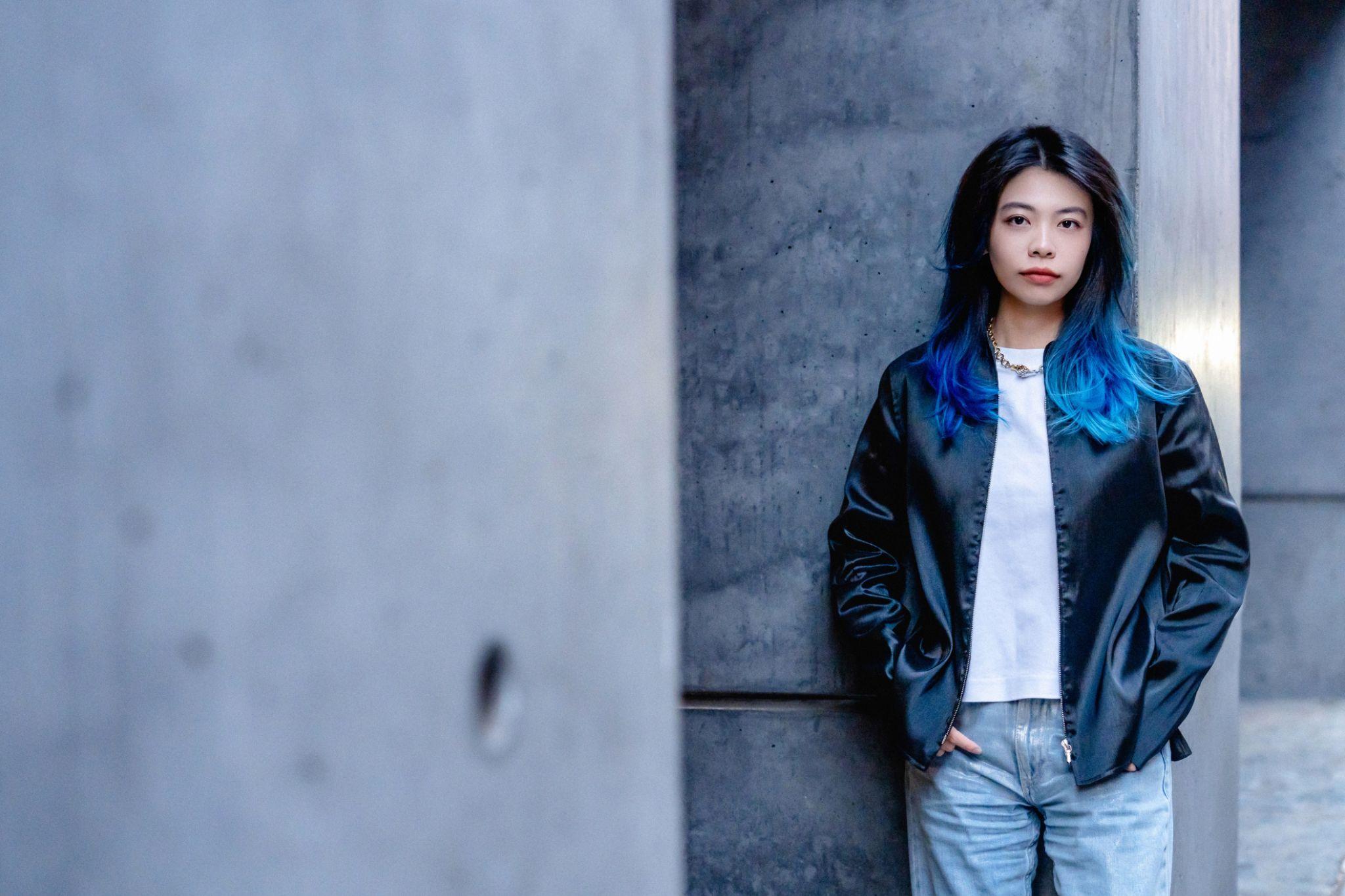
New York-based curator Chiarina Chen stages exhibitions in unexpected and dark places inviting her audience to dig deeper into pertinent topics like anxiety, nightmares, e-waste, cyborgs, and posthuman kinship. “Shifting away from self-centered ideologies, I create safe spaces in the darkness. Where you can be opaque and there might not be an answer to your questions,” Chen tells me when we met over cocktails at a restaurant in the West Village. “You work in the shadows,” I say and we giggle both agreeing that our society is too fixated on happiness, not crediting pain, trauma, and sorrow with the power to transform, or that these emotions are an important facet of life. Chen, who studied psychology, does not normally curate in white box spaces and her presentations mostly incorporate light and sound components—and, often her project involves multi-year processes of data gathering.
Earlier this year at Accent Sister, Chen curated “Lava.AI.Dreams” in a darkened exhibition space—make-shift coverings blocked the light from the windows. Centered in the area, playing on a large projector was a video piece by Koi Ren, interchangeably a soundscape by Tayouzi emanated from speakers on the floor, and AI-generated prints visualizing tropes familiar in the nightmares of women whose dreams Chen has collected were installed in a corner. A curtain hung in the space forming a path for visitors to meander through the exhibition. Part laboratory and part exhibition this exhibition concerned Chen’s ongoing work about anxiety—for seven years she has amassed an archive of hundreds of recollections of anxiety, ‘urban misery,’ and nightmares. “The AI component—the nightmare visualizations—of the exhibition pinpoints human entanglement with technology showing how we can work with technology to embody the posthuman mind and body,” Chen explains. Inspired by Donna Haraway and Rosi Braidotti these ideas of kinship between technology and humans, recognizing discomfort, and building and creating relations continue to evolve and are ever present in Chen’s work.
“Curating is like flowing lava, passionate and dangerous. It is non-binary and learning boundaries—I glean a lot of inspiration from these metaphors. Another tenet in the exhibition is that we are intertwined with machines; this exhibition is a machine, it is lava flowing in dreams,” she says excitedly.
Quoting Eduard Glissant, she says, “Pain and trauma is not fixed, it is constantly moving and constantly transforming.” Unlike methodologies of sampling–or case studies in psychology, which Chen’s data-gathering resembles, working in the field of curation allows her to sidestep analyzing material through a scientific approach, instead, she can expand to create situations that foster empathetic responses. “Psychological rational tools of analyzing are centered on categorizing data into symptoms. It is not wrong it is just not enough,” she says. Continuing, “Moving toward the complexities of emotion and pathology rather than speaking about symptoms, labeling, and categorizing can allow negative spaces to turn into something positive. Art in my ongoing work about nightmares becomes a conduit of releasing and sharing.”
This show is part of a series that evokes the sphere of transformation without labeling. “I am not anti-white cube in a Hegelian sense, rather I ask: ‘What is this project about and what are the best methods to display it?’ Most of the time I find that black boxes display ways of thinking more comfortably than bright busy white spaces,” Chen explains. Because of her aesthetic and research methodology—allowing projects to develop over time, not quite knowing the outcome when she begins—people tend to situate her work within ‘alternative or underground art,’ she often works with underground or non-traditional spaces.
“Lava. AI.Dreams” took place at Accent Sisters, a female-founded queer Chinese speak-easy bookstore and vintage clothing shop in Jersey City. Founded less than a year ago it has amassed a cult-like following of fashionable and avant-garde Chinese and non-Chinese poets, creatives, and scenesters. As the co-founders have shaped their path by operating at the cutting edge, Chen and the space’s partnership is an evident and good match.
As always with avant-garde ideas, there is growing institutional interest. She mounted the exhibition “Poetics of Inquiry: How to Stay with Trouble” at MIT in March and curated a light activation at the Heckscher Museum in October.
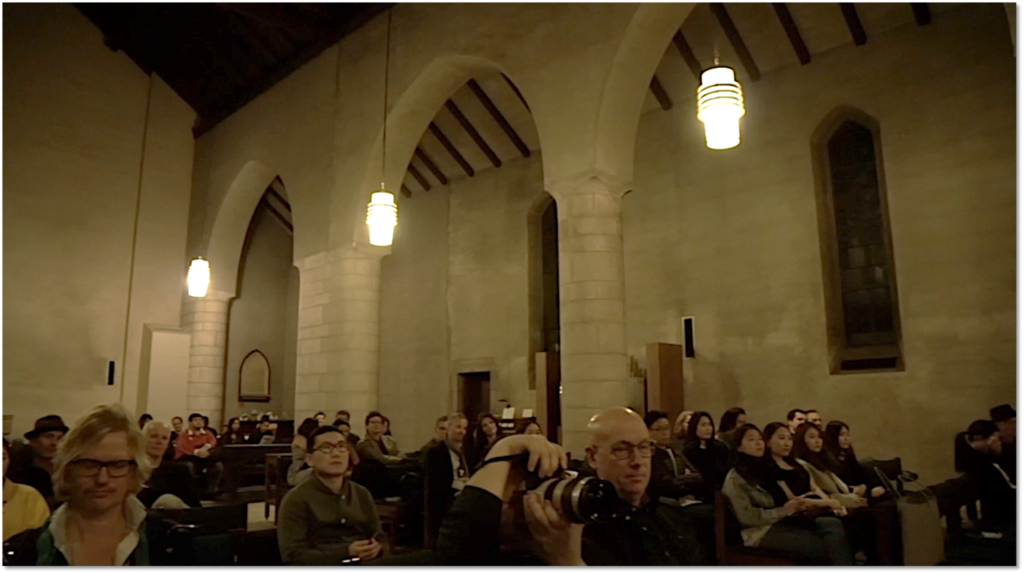
As part of another serial program, “Collecting Anxiety,” Chen organized a sound installation attended by 100 people at the Church of Epiphany. The church allowed for the experience to move from subsonic to supersonic. ”Since the 19th century the architecture of churches has been constructed in an acoustic effect to emulate the sublime,” she explains. “We dimmed the lights and the sound movements experience was very intense—I had planned to host an after-party, but people were overcome with emotion and went home. It was a moving piece,” Chen continues.
The sound piece was created by Rafael Vargas-Suarez and Stephen Barber and remixed with sounds of anxiety—”record when you feel repressed,” was a prompt—that Chen had collected from people over the years. Chen tells me about an Italian participant who heard one of his sounds and found that this remixing with artistic ideas gave him another layer of understanding.
It is no small feat to stage a secular event centering anxiety in a church, I remark. “I encountered many fathers,” I break her off, “-priests.” “Yes,” she laughs. “They were alert and defensive and did not want to include nonreligious people in their programming—and, they don’t trust Chinese because they know we are not religious.” After speaking to some ten priests at churches around the city she was welcomed at Church of the Epiphany, where she worked with a woman, probably not coincidentally.
“At Gallery 67, I organized an overnight event from 3 to 4 AM. The dark space created a psychological and relaxing ambiance. The time of night indicated experimentation,” she says. The waiter has come to our table multiple times asking for more orders, we have been too busy talking to eat. We decided to go to the Whitney Museum and pick up the interview at a later date.
In between our sessions, I think about Chen’s practice and the role of curator—her practice not only holds but also archives, develops, and presents ideas, in no particular order. With a few base ingredients as her starting point her open-format work is structured. Meandering from mind to matter, mental, digital, and physical she has created a lexicon of shows that all interconnect with each other, collaborating with rather than exhibiting artists.
We continued our interview at my apartment on the Lower East Side. I ask Chen questions as I type my notes—usually, if an interview goes into two sittings I conduct the second one over speakerphone to focus on editing the text. But, it is nice sharing space with Chen and she does not mind me focusing on my screen and keyboard making eye contact only occasionally. Chen is wearing a satin shirt in cloudy pastel colors, her hair is blue, and her demeanor is bright and inquisitive; everything about her is futuristic and hopeful. “Like dating, curating is best if you are your authentic you; throughout my collaborations as an independent curator I am letting my voice out,” she says.
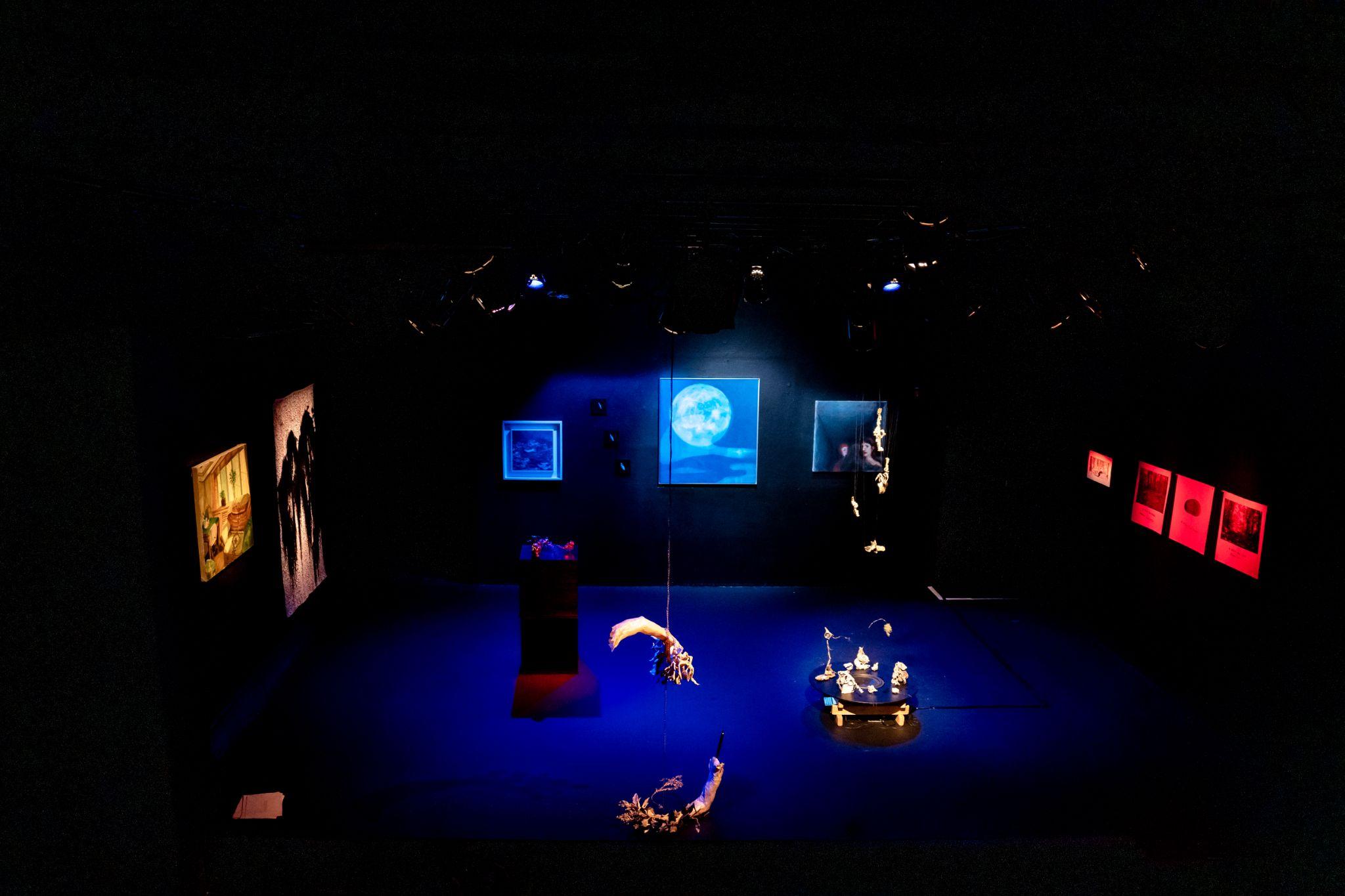
Chen’s most recent exhibition “The Tale of Erranty to the End of the Night” invited visitors to consider diasporic experiences through sound installations, fixed artwork, and interactive performances by Alchemyverse (Bicheng Liang and Yixuan Shao), Amir Shpilman, Chang An, Lu Zhang, Shuyi Cao, Yasue Maetake, Mimi Bai, Kyoung Kang, Han Qin, Helia Chitsazan, Jiaoyang Li, and Nikhil Shah. About it she says, “Above all, we made this show to reclaim opacity in darkness, to unravel the process of uprooting, personal narratives, and uncanny relations. Errantry and opacity are so important to me and ‘black box curating’ is an embodiment of these ideas.”
Some works, make visitors forget the venue entirely. Like composer Shpilman’s over eight-hour sound piece comprising singers sounding letters from the Hebrew alphabet in a layered recording. Sitting with headphones in one of the theater’s front row seats I closed my eyes to focus on the experimental recording captivated for the better part of an hour.
Chen visited eight different theaters until she found the right one. She explains that the exhibition space is transient, a moving current. “Even though they look still on the surface, beyond our visual and audio perception range, they are morphing, decaying, oxidizing, changing, or communicating with entities that Western methods cannot measure.” She found a space to hold that energy at the Chain Theater in Midtown.
Ghosts were present at the exhibition; Li’s work connected with friends she had lost to time and circumstance. A list of names and a lamp with a motion sensor turning on and off installed in a seat overlooking the stage brings thoughts of them to the space. There is a Chinese custom of leaving the room a person dies in intact, so they can find their way back. Not living in China, Bai painted the room that her grandfather died in thus transporting him and it to the United States. On the last day of the exhibition, Chen invited visitors to the space for an embodied healing exercise. “I was touched and reflected on how an exhibition can bring back togetherness and care,” she says about the heartfelt goodbye.
“I intentionally excluded the screens and video works and focused more on the embedded experience and the effect evoked from materiality,” Chen explains. Continuing: “I am posthuman. It is not only an approach to curating but also life.” She does not see herself as a sole individual but network. “A human-centered view has dominated discourses since the Enlightenment. We have created divisions between man, woman, human, nature—instead of connecting and traversing, taking an interspecies approach,” she continues. Chen, who is a Chinese national, tells me about her great-grandfather who was a local protector in his village—in their family mythology he is known as the Monkey King—he consulted people and led rituals with the monkey deity as his guiding him. Chen feels connected to him. “Posthumanism is not linear, it is an alternative way of thinking: ubuntu, horizontally, and converging with both nature and technology,” she says.
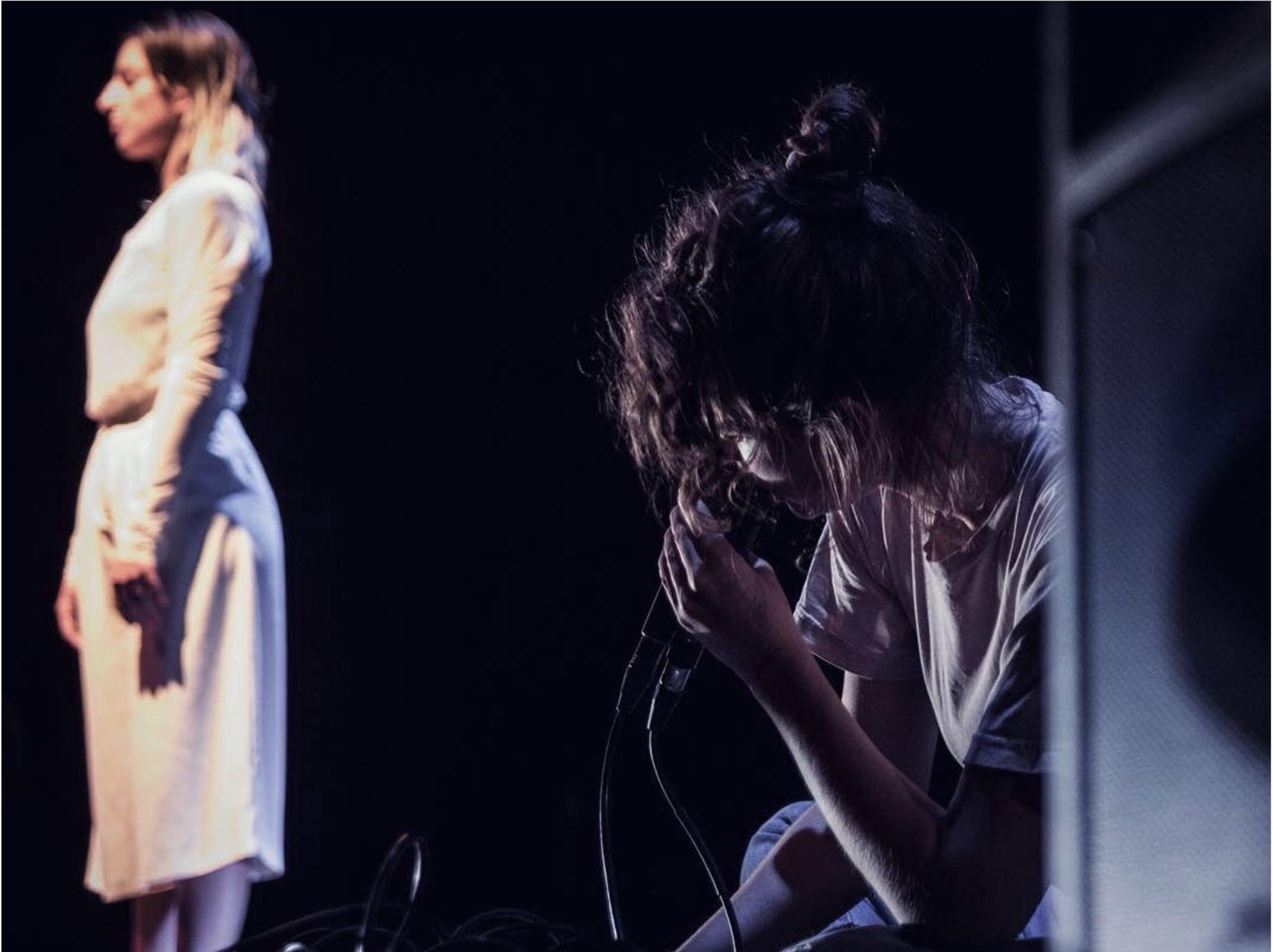
There is a connection to be made between ancestral knowledge and technology—“Technology does not have to be full of screens,” Chen points out. In 2019, Chen worked with Moon Ribas, a known artist and body hacker, who has implanted devices in her feet that vibrate with the seismic movements of the earth—this type of research embodies posthuman thought. In “Magic Back to Town,” on a theater stage, Ribas danced to the sound of anxiety to explore what it would arouse in her body. But also more tangible projects speak to our interconnectivity with technology, like “Wasteland of the Future” a Father’s Day workshop Chen organized at Shanghai Himalayas Museum for 10-15-year-olds where children were invited to playfully consider the environmental crisis, extinction, and advanced capitalism by dissembling e-waste (phones, computers, and other disused hardware) and rebuild it to create new uses.
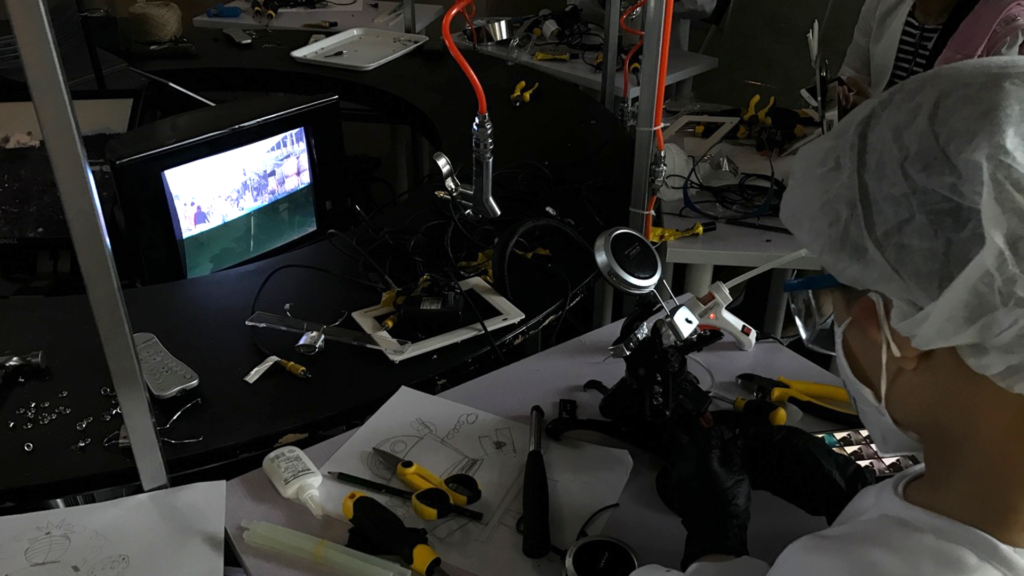
“Since children in China are under a lot of pressure I wanted the event to be educational but also playful,” Chen says. “The imagination of the younger participants was more wide-ranging than the older teens. 14-15-year-olds want to feel the stresses of their direct environment more deeply, several of them wanted to create a robot to do their homework,” she laughs.
The project had a very real connection to children. In the 2010s, China had an e-waste village in Guiyu, it was the second-largest e-waste dump site forming a substantial underground economy. In these villages child labor, children dissembling e-waste to retrieve precious parts to sell, was rampant, and hazardous waste was the root of much cancer in the population. In the museum show, to make participants think, Chen played videos of children dissembling the e-waste. She also ran workshops in New York and at Fudan University.
“Mainstream goals in China and the U.S. are to be successful at a young age and parents are made to believe that if you are anxious there must be something wrong—in actuality, this breeding ground for repressed feelings causes more emotional distress and fear than anxiety itself,” she says. I realize we have made a full circle, and are back to where we began: our society’s anxieties about anxiety. “By over-emphasizing the positive, you put stress on people,” she continues, concluding: “By embracing anxiety you are embracing humanity.”
Next Chiarina Chen is hosting “Heal Me Through Your Nightmare” a dream-sharing workshop as part of The Immigrant Artist Biennial on October 22, 1-3 PM at Wendy’s Subway, 379 Bushwick Ave, Brooklyn, NY 11206. Reserve your ticket here.
You Might Also Like
In Vienna, “Is This Intimacy?” on view at Krinzinger Projekte
What's Your Reaction?
Anna Mikaela Ekstrand is editor-in-chief and founder of Cultbytes. She mediates art through writing, curating, and lecturing. Her latest books are Assuming Asymmetries: Conversations on Curating Public Art Projects of the 1980s and 1990s and Curating Beyond the Mainstream. Send your inquiries, tips, and pitches to info@cultbytes.com.

